Let’s face it, the United States Congress is an absolute ![]() show and we’re merely spectators. Debate is dead. Partisan fighting is now sport. Rarely do we even see legislation passed, let alone legislation passed with bi-partisan support. Trillion dollar deficits are the norm, while ironically, most politicians are drowning in corrupted money.
show and we’re merely spectators. Debate is dead. Partisan fighting is now sport. Rarely do we even see legislation passed, let alone legislation passed with bi-partisan support. Trillion dollar deficits are the norm, while ironically, most politicians are drowning in corrupted money.
And character, what’s that?
Once home to gentleman scholars, Congress is now littered with liars, perverts, criminals, and morons who shouldn’t even be interns, let alone representatives in the most powerful Congress in the world. And now shutting down the government has become a popular negotiation tactic! Wow. We’re literally at the threshold of hell… and yet WE THE TAXPAYERS pay roughly $150,000,000 each year to fund Congress! We’re supposed to be the “government of the people, by the people, for the people,” so why do WE THE PEOPLE put up with this crap? The short answer is we shouldn’t. And I’ll explain why…
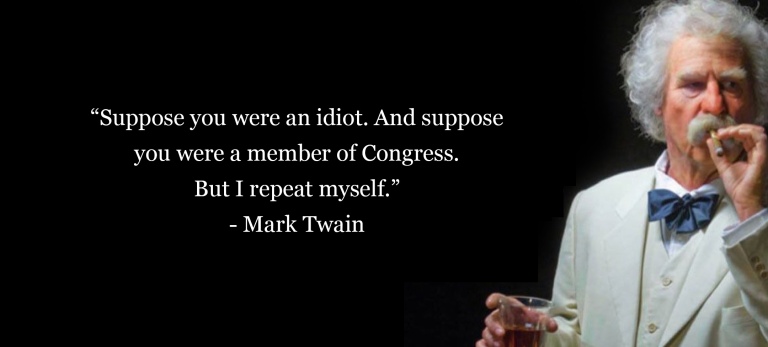
The Purpose of the United States Congress
Let’s start by looking at why Congress actually exists by understanding our founding fathers governing philosophy for the new nation. According to Wikibooks, the United States Constitution divides government…
into three separate and distinct branches: the Executive, Legislative and Judicial branches. The concept of separate branches with distinct powers is known as “separation of powers.”… Each branch is theoretically equal to each of the others. The branches check each others powers and use a system known as checks and balances. Thus, no branch can gain too much power and influence, thus reducing the opportunity for tyrannical government.
Separation of powers makes sense, but what purpose does Congress have specifically? The Congress of the United States exists to serve two distinct – but not mutually exclusive – purposes:
- Local representation to the federal government of a congressional district by representatives
- A state’s at-large representation to the federal government by senators
Ok, it’s a representative government, we get it. But perhaps a little too vague. Digging further, we find that Article I of the Constitution succinctly describes congressional powers as follows:
-
Make laws
-
Declare war
-
Taxation, budgeting, and proper expenditure
-
Impeach and try federal officers
-
Approve presidential appointments
-
Approve treaties negotiated by the executive branch
-
Oversight and investigations

Great, that’s more informative. Let’s take it step further and look at the primary responsibilities of a Senator and Congressman to better understand their role:
- Legislative – Draft and introduce legislation
- Constituency Servant – Help constituents solve their problems
- Education/Communication – Articulate and take positions on issues; educate and inform constituents about legislation
- Representative – Represent and advocate the district’s and constituents’ interests
- Political – Campaigning, party leadership, and reelection
- Oversight – Determine that laws are administered as Congress intended
- Institutional – Interact with the executive branch, interest groups and other levels of government
- Office Management – Oversight of personal office
This list obviously represents very serious work that needs to get done in Congress each and every day, but often does not due to partisan fighting, campaigning, obstruction… and well, they’re only in session about 135 days a year! So there’s that.
Beyond these founding ideals and specifics of the daily duties of our legislators, our founding fathers simply didn’t have the ability to allow all citizens to participate in government because it wasn’t physically possible, let alone practical. Most people were busy in their daily lives and probably not interested in participating. But if they did want to participate, how would they get all citizens into a single room, and then somehow listen to thousands – if not millions – of voices and somehow come to a consensus on policy and funding decisions?
There wasn’t a mechanism great enough to handle these operational challenges 242 years ago when this great nation was founded. That is, until now…
How Technology Can Replace the United States Congress
![]() If you’re an avid technologist like myself, you look at the list of congressional powers and responsibilities and it starts to look like a requirements list.
If you’re an avid technologist like myself, you look at the list of congressional powers and responsibilities and it starts to look like a requirements list.
So why don’t we simply build an online platform that replaces Congress?!!
It’s actually easier than it sounds, and here’s the details…
Replace Elections with Randomized Citizen Participation
This platform would automatically assign “Congressional duties” (same as Jury duty) at random to 535 Americans – 100 Senators and 435 Representatives – to a one-time 6 year term (paid comparable salary to what Congressmen are paid today – minus the lifetime salary & benefits after service!). This alone will remove money from Congress and instill order and civility back in the legislative process. Say goodbye to campaign financing issues and Super PACs and hello to a truly representative system where WE THE PEOPLE are all represented.
Another benefit is that it will also destroy the two party system as well as the notion of party allegiance – and partisan fighting that goes with it – and return the discussion back to focusing on core values, issues, and changing the lives of people for the better each and every day <gasp>. And since there would be no more elections, we will allow U.S. citizens to vote on each Congressman’s performance each year, where we can vote them out of office if they’re not adequately engaging in their legislative duties.

Online Citizen Voting Platform
The Internet wasn’t around 242 years ago, but it is now. Which means we can easily allow every U.S. citizen to become a part of the legislative process on a digital platform in real-time, where they can do the following:
- Utilize educational videos, analytics, and resources to learn about the legislative process and current issues, U.S. government history, and a calendar of local events to engage directly with Congressmen.
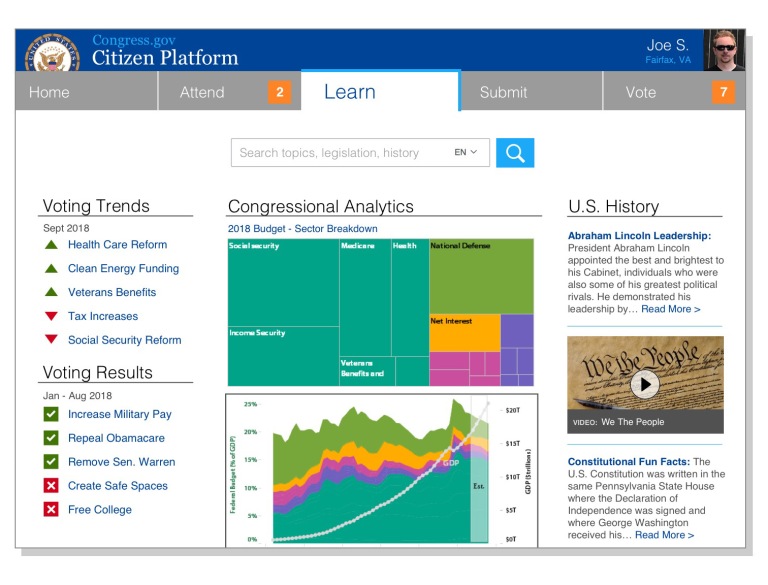
- Submit a recommendation for a bill, tax or budget item, treaty, investigative issue, or even declaration of war! Same concept as Change.org where you can start a petition, citizens vote on it, and often the most popular petitions are considered by Congress for legislative action, pardons, etc.
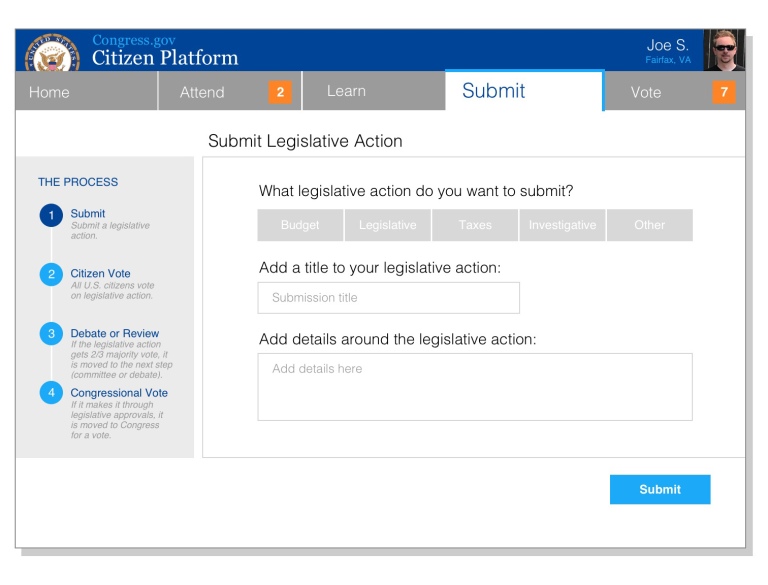
- Vote on any and all of the issues submitted by other U.S. citizens, where a 2/3 majority will move a bill or budget item into the debate stage, an investigative issue into committee review, etc. Again, the same concept as Change.org, but this time the voting outcome actually enables action by Congress. And if we take this a step further, think about all the possibilities of this platform to hear the voices of those directly impacted by specific legislation; for example, this platform could restrict voting on abortion to just women… why would men ever be involved in this decision? Veterans could vote on veteran benefits. And so on. The realm of possibilities are endless… and yet sensible and thought-provoking.
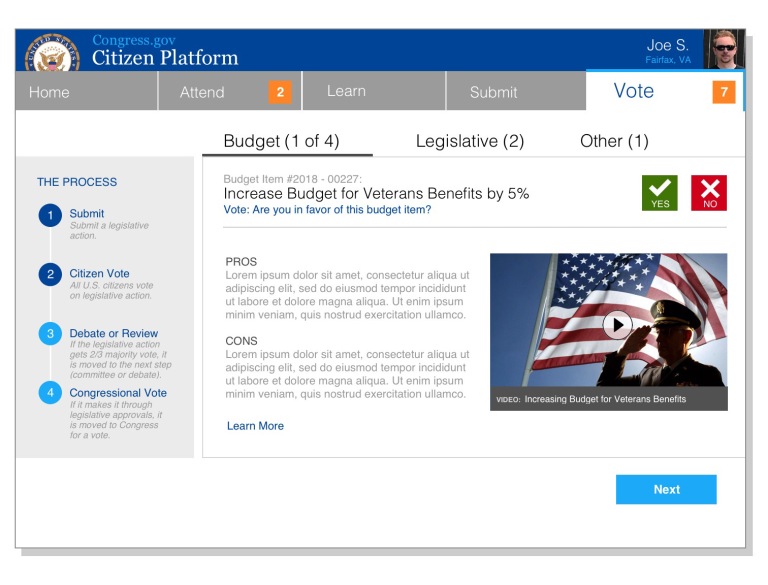
Online Congressional Platform
Why waste time and money having Congressmen travel back and forth to Washington D.C. just to bicker and fight? Now, every randomly assigned Senator and Representative can voice their opinions, draft and debate legislation, and vote on every legislative and budgetary item, and other daily tasks right on the digital platform.
This will go a long way to provide the necessary time and focus for Congressmen to actually meet and engage with more citizens in their district/state more often and with more digital tools to understand and engage them on their needs.
Just imagine the analytics from the digital platform a Congressman would be able to utilize to better perform their duties and engage with the public!
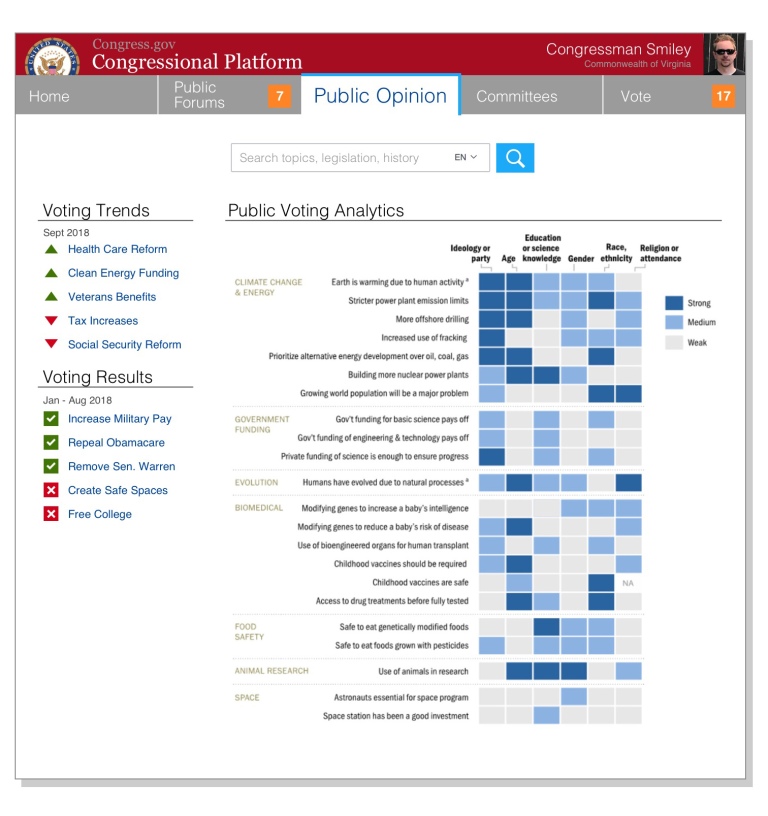
Additionally, Congressmen can meet privately on the digital platform with their various committees to study and review issues, investigative actions, and other important concerns. We can even take this digital platform a step further and provide these debate and committee meetings utilizing the latest virtual reality (VR) technology to better simulate the storied halls of Congress. We could also utilize blockchain to be certain of each voter’s identification, and to track their vote – along with the broader voting process – to ensure that all votes are counted, secured, and archived.

And of course there’s commercial off the shelf technology (COTS) we can utilize, like Google Documents or Office 365 which makes it easy for Congressmen and their staff to virtually collaborate on legislative documents. So it’s actually that easy, most of these technologies have existed for years, and building on open source technologies will enable the platform to grow and scale easily.
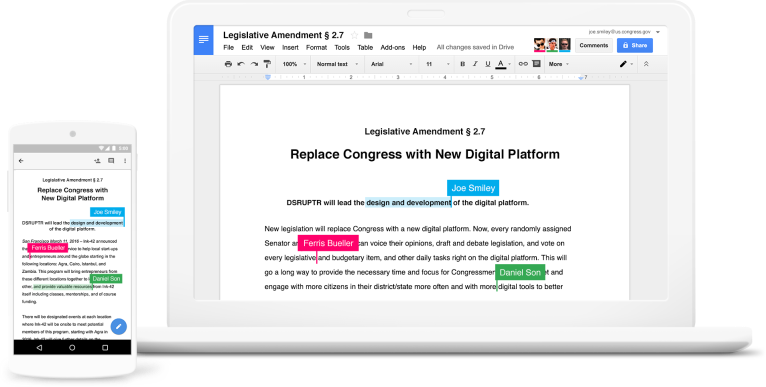
Part 1 Conclusion
Abraham Lincoln once spoke so eloquently of our government as he honored soldiers that sacrificed their lives in order “that government of the people, by the people, for the people, shall not perish from the earth.” While Lincoln had his own issues with Congress, he could never have imagined how dysfunctional our Congress would become, as well as the entire political system. Sure, our democratic process is still leaps and bounds ahead of many other nations, but we’re on a downward trend and we need to take proactive steps to ensure our democracy remains intact for centuries to come.
Stay tuned for Part 2!


One thought on “Disruptive Thinking: How WE THE PEOPLE Can Replace Congress with Technology (Part 1 of 2)”